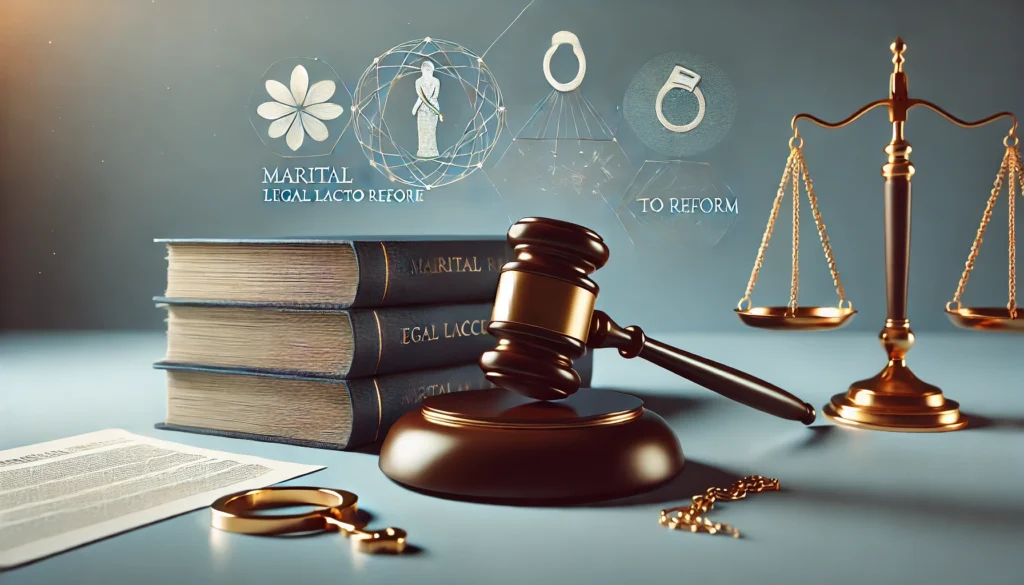Published on: 07th October 2025
Authored by: Anisha Raghav
G. D. Goenka University
Abstract
Judicial accountability in India is the doctrine that provides that judges and judiciary must be accountable for their decisions and conduct; their actions must be thereby just and worthy of the public’s trust. Whereas judicial independence entails that judges must be free from external intervention-and particularly from that exerted by the executive and legislature-to ensure that impartial decisions are rendered, accountability entails that judges must be answerable for the exercise of their judicial functions, thereby eliminating the possibility of misuse of power or corruption.
The delicate balance: too much transparency or external interference would pose a threat to the independence of the judiciary, and lack of accountability will cause opacity, judicial misconduct, and decreasing public confidence. Thus the Indian judicial system tries to maintain such a balance by instituting through constitutional safeguards acts, and mechanisms that promote transparency and accountability to the judiciary without compromising its independence.
The Indian Constitution ensures this by implementing safeguards such as security of tenure, protection from arbitrary removal, impeachment process, etc., as well as through internal mechanisms to uphold judicial conduct and ethics.
-
The Paradox of Independence and Accountability
Judicial independence is necessary for the free and fair decisions from the judges, thus protecting the rule of law or in ensuring individual liberty. However, an unchecked judicial autonomy may lead to power abuse, favoritism, or even corruption. While accountability dictates the judiciary to justify its actions, such responsibility should not lose sight of maintaining judicial independence. The independence of the judiciary is established in the Indian Constitution, mainly by isolating it from the legislative and executive, and also tries to address the problem of ensuring that the judiciary remains accountable before the public and the law. This ever-present conflict is the pivot around which judicial reforms revolve[1].
Reports by India’s courts include some landmark rulings upholding constitutional rights, reforms in electoral mechanisms, and some aspects of public interest litigation. So far, the courts have faced criticism and have occasionally been accused of lacking transparency, especially when it comes to judicial appointments and disciplinary proceedings. With increasing delays in justice delivery, selective docket management, instances of judicial misconduct, and highly opaque appointment procedures, the sorts of broad institutional reforms have become an urgently discussed topic.
-
Constitutional Safeguards and Institutional Checks
The Indian Constitution does include a few guarantees to assure the independence of the judiciary. These are guaranteed tenure for judges, restrictions on removal (i.e., a judge can be removed only after a rigorous impeachment process), financial independence of fixed terms of services and salaries charged to the Consolidated Fund, and the power to punish for contempt (Articles 124, 129, and 211). At the subordinate level, courts are subjected to the supervisory control of the High Courts (Article 235). For the higher judiciary, accountability is provided through the Judges (Inquiry) Act and the impeachment process, both seldom used and difficult to implement. The collegium system intended to be an internal mechanism which tries to balance the privilege of independence with accountability is also attacked for its opacity.
The process to remove judges is set in Articles 124(4) and 124(5) for the Supreme Court and Articles 217 and 218 for the High Courts. Judges may be removed only in case of “proved misbehaviour or incapacity,” upon the President’s order passed after the Houses of Parliament have adopted the motion with a special majority[2]. Though used very frequently in practice, the term “impeachment” is actually absent from the Constitution.
Stipulated under Article 124(5), Parliament enacted the Judges (Inquiry) Act, 1968[3], and the rules thereunder, which provide for the proceedings for enquiry against a Judge to effect his removal. The motion can be initiated only with the support of at least 100 members of Lok Sabha and 50 members of the Rajya Sabha and by acceptance of the presiding officer of the respective House. A committee comprising a Judge of the Supreme Court, a Chief Justice of a High Court, and a distinguished jurist then enquires into the matter. Should the committee find substance in the charges, both Houses of Parliament are required to pass the motion with the requisite special majority, following which the President may order the removal of the judge.
-
When Transparency Tests Independence: Challenges and Dilemmas
Attempts at greater transparency in the judiciary—such as publishing details of judicial appointments or judges’ assets—have thrown open the window for greater public scrutiny. However, this same call for openness may attract political interference or intense media focus, either of which can severely affect judicial independence. The highly secretive collegium system of appointing judges continues to be the target of criticism for its unaccountability, while the sheer impracticality of impeachment makes it a pretty ineffective check. Yet, ongoing judicial delays and controversies erode public confidence, but too much coercion from outside can also damage this very constitutional guarantee of independence[4].
Indian judicial accountability is on shaky ground and is weakened by unclear procedures, a culture of closure, and a long history of political intervention. At one time, under this atmosphere, the superior judiciary has been at liberty to function with almost no consequences for misconduct, and hence public prejudice generated against law and order. While the judiciary is entrusted to uphold constitutional morality, the present mechanisms of control are often by themselves deficient and ambivalent in law.
The most disagreeable feature of the collegium method of judicial appointments is its stealthy, informal nature. In the absence of a transparent, codified set of criteria on merit, capability, or integrity, the selection is wrought with suspicions of partiality. Such an expectation is that an executive may stall, reject, or override names without explanation, injecting into the process even more government influence.
Thus, judicial transfers under Article 222 are often applied against the acceptance of the judges, remaining quite opaque as to criteria. Transfers for better administration of justice seem, in reality, more arbitrary, serving as disguised measures for disciplining or sidelining judges who express views contrary to established institutional or political ones.
Equally problematic is the in-house procedure for judicial discipline because it operates behind closed doors and is, therefore, without any external oversight. This cloak of secrecy can frequently end up protecting errant judges from thorough investigations and develop a culture wherein misconduct prevails in non-transparency, with little to no public or legal redress. Notably, in the so-called misaal-at-door scandal, although findings suggested the removal of Justice Nirmal Yadav, systemic barriers delayed any real action.
Arguably, resignations during disciplinary proceedings to stop those proceedings while allowing post-retirement benefits to accrue constitute the biggest loophole of the framework. It allows the judges to avoid scrutiny simply by resigning, hence rendering true accountability null and void, as visible in the cases of P. D. Dinakaran[5] and Soumitra Sen[6].
These persistent deficiencies, therefore, call for institutional reforms that make transparency, clarity, and oversight a reality—as this would restore and sustain public confidence in the Judiciary.
-
Innovating Judicial Accountability: Emerging Reforms and Future Pathways
Recent proposals mirror the array and address some of the pressing concerns by suggesting the Constitution establish all judicial accountability authorities independent of any potential politicization, formalist complaint mechanisms against judges with due process, and live-streaming of court proceedings to ensure transparency while not obstructing judicial functioning itself. Disclosure of assets by judges would be one element; ethics committees and peer reviews system would be another to enhance self-regulation processes beyond any direct forms of political interferences[7]. Adoption of technology and awareness campaigns will also help bring transparency, provided that judicial sovereignty is not compromised. The slightest distortions to any innovations must weigh in very heavily when even one could tarnish the honor of the judiciary, while on the other hand, all innovations need to keep the judiciary answerable to law and trust of the people.
-
Sustaining Public Trust: The Balance as the Bedrock of Judicial Legitimacy
Impeachment is the gravest constitutional method designed for holding judges accountable for proven prejudice; however, in India, it is more symbolic than an actual mechanism. No Judge has ever been removed through this procedure since its formation more than seventy years ago; this has rendered it somewhat ineffective as it demands a two-thirds majority consensus in both houses of Parliament, something expected to be touted with political maneuvers. The fragility was further accentuated by the Justice V. Ramaswami case[8], in which he continued in office despite being found guilty by the inquiry committee, the ruling party chose to abstain from voting on the proposed removal. Thus the political interest stood in way of the judicial accountability.
The public’s faith in the judiciary depends on the judges being recognized as independent and answerable for their actions. Independence and accountability are two sides of one coin: to uphold the rule of law and democratic norms. When the judiciary begins to see itself as unaccountable and compromised, it can shatter the very foundations of democracy. Trust needs to be generated and maintained by a carefully conceived system that disallows politicization under the garb of transparency and denies independence being used as a shield for wrongdoing. Towards that end, India must now strive harmoniously with constitutional safeguards, systemic reforms, and active civil society engagement, in attempting to strike that lasting balance.
Judicial independence and accountability cannot be thought of as remote opposites; they are complementary and must exist alongside each other in a democracy. Unlike jurisdictions which cede judicial discipline to an independent council, India vests this power solely in Parliament, making the entire accountability framework intensely politicized and therefore largely ineffective.
Conclusion
The Justice Yashwant Varma case[9] brought into sharp relief the much-observed deep-rooted structural deficiencies plaguing the judicial system. Judicial freedom must, of course, be maintained for the courts to act as the protectors of the Constitution; however, this should not deny the establishment of accountability. The absence of explicit statutory standards for judicial conduct and the ambiguity regarding what constitutes “proved misbehaviour” results in inconsistent, reactive disciplinary actions, permitting selective enforcement.
In order to truly restore the sanctity of the judiciary, much more far-reaching reforms must come into force. Transforming the in-house procedure into one that is public, codified by law, and time-bound would be the foremost step. A mechanism for the establishment of a Judicial Complaints Commission may be created, comprising retired judges, legal experts, and members of civil society, with the objective of conducting impartial, credible investigations.
There is similarly a need for greater transparency in judicial appointments, enforcement of codes of conduct, and mechanisms for relevant public oversight. Executive influence could be checked by the introduction of a mandatory cooling-off period for judges accepting post-retirement employment, whereas institutional legitimacy could be enhanced through transparency within the collegium. Finally, the impeachment process needs to be restructured to ensure it cannot be paralyzed by politics while still assuring due process. It is the reshuffling of these institutions that will ultimately save both judicial independence and democratic accountability.
References
(1) Judicial Accountability in India: Need for Transparent Appointments and Disciplinary Mechanisms, LawVS, https://lawvs.com/articles/judicial-accountability-in-india-need-for-transparent-appointments-and-disciplinary-mechanisms.
(2) Judging the Judges: Crisis of Accountability in India, NLIU Law Review Blog, https://nliulawreview.nliu.ac.in/blog/judging-the-judges-crisis-of-accountability-in-india/
(3) The Judges (Inquiry) Act, 1968, No. 51, Acts of Parliament, India (Dec. 5, 1968).
(4) Judicial Accountability in India: Need for Transparent Appointments and Disciplinary Mechanisms, LawVS, https://lawvs.com/articles/judicial-accountability-in-india-need-for-transparent-appointments-and-disciplinary-mechanisms
(5) In re Impeachment Proceedings against Justice P. D. Dinakaran, Writ Petition (C) No. 476 of 2011 (India).
(6) Soumitra Sen v. Union of India, (2011) 9 SCC 129 (India).
(7) Balancing Judicial Independence and Accountability in India: Comparative Perspectives and Constitutional Challenges, International Journal of Law, Language & Discourse, https://www.ijllr.com/post/balancing-judicial-independence-and-accountability-in-india-comparative-perspectives-and-constituti
(8) Sarojini Ramaswami v. Union of India, (1992) 4 SCC 506 (India).
(9) XXX v. Union of India, 2025 INSC 943 (India S.C. Aug. 7, 2025).
[1] Judicial Accountability in India: Need for Transparent Appointments and Disciplinary Mechanisms, LawVS, https://lawvs.com/articles/judicial-accountability-in-india-need-for-transparent-appointments-and-disciplinary-mechanisms
[2] Judging the Judges: Crisis of Accountability in India, NLIU Law Review Blog, https://nliulawreview.nliu.ac.in/blog/judging-the-judges-crisis-of-accountability-in-india/
[3] The Judges (Inquiry) Act, 1968, No. 51, Acts of Parliament, India (Dec. 5, 1968).
[4] Judicial Accountability in India: Need for Transparent Appointments and Disciplinary Mechanisms, LawVS, https://lawvs.com/articles/judicial-accountability-in-india-need-for-transparent-appointments-and-disciplinary-mechanisms
[5] In re Impeachment Proceedings against Justice P. D. Dinakaran, Writ Petition (C) No. 476 of 2011 (India).
[6] Soumitra Sen v. Union of India, (2011) 9 SCC 129 (India).
[7] Balancing Judicial Independence and Accountability in India: Comparative Perspectives and Constitutional Challenges, International Journal of Law, Language & Discourse, https://www.ijllr.com/post/balancing-judicial-independence-and-accountability-in-india-comparative-perspectives-and-constituti
[8] Sarojini Ramaswami v. Union of India, (1992) 4 SCC 506 (India).
[9] XXX v. Union of India, 2025 INSC 943 (India S.C. Aug. 7, 2025).




